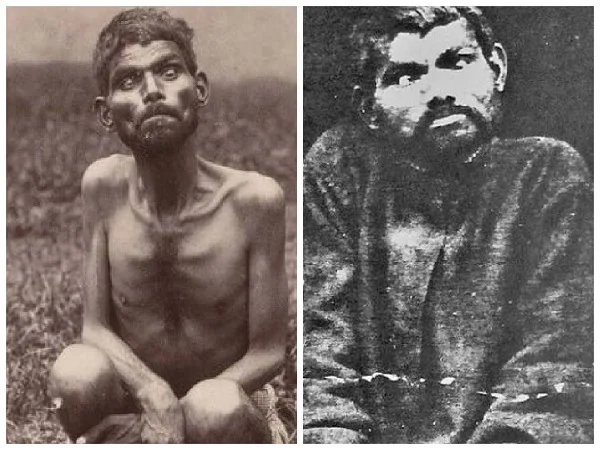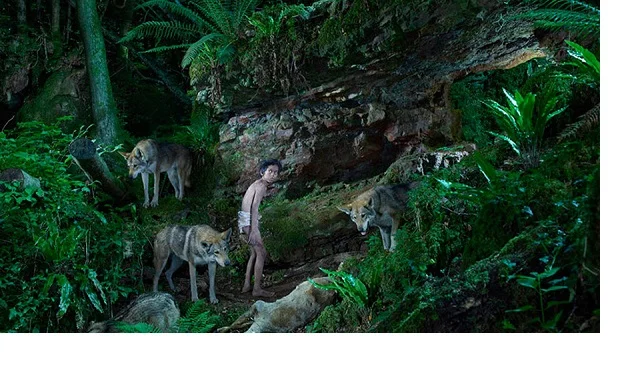The real Mowgli: kids living in the wilds with animals

Some of the wild animals that we rightly fear come to help some children and even take care of them for a long time. Not only fiction boy Mowgli, there are real children live and raised by wild animals.
True, this is not very similar to the Kipling story about the boy Mowgli – the reality is much harsher and more prosaic. Wild children, for some reason raised with animals, have practically no chance to adapt to normal life.
These kids live with the wild animal
The Wolf Boy (India)

The history of science is full of wild boys. One of the first documented cases dates back to 1867 when the little 6-year-old Dina Sanichar was found in a wolf cave by some hunters in the jungles of Bulandshahr (India), amazed to see a boy following a wolf into his lair.
He returned to civilization and lived a little less than 30 years; he never learned to speak. And apparently, he became addicted to tobacco.
Sidi Mohammed( North Africa)
Sidi Mohammed was found at the age of 15 in 1945 in North Africa. He told anthropologist Jean-Claude Armen that he had lived with ostriches since he was 5 years old. Armen was quoted in Notes Africaines, published on 26 April 1945.
The boy told Armen that he found an ostrich’s nest when he was about 5 years old, and the birds got used to it. He stayed there, eating grass with them and learning to run at high speed, sleeping under their wings at night. He was found by hunters and returned to his parents, but he always dreamed of his life with the birds.
Bello (Nigeria)
Bello, the boy, was raised by monkeys. When Bello was found in a Nigerian forest in 1996, he was only 3 years old. Disabled, he had been abandoned by his parents, belonging to the Fulani, a nomadic people of the Sahel region of West Africa, at about six months.
It is believed that he was adopted and raised by chimpanzees, as when he was found, Bello was walking using his legs but dragging his arms to the ground. Placed in an orphanage with other children, he had a lot of trouble adapting, but six years later, he appeared much calmer, although he still wanted to jump in a way similar to that of chimpanzees, of which he also imitated other mimics. He died in 2005, probably dreaming of the return to nature that had taken care of him.
Kamala and Amala (India)

The Reverend Joseph Singh discovered two little girls in a den of wolves. They ran on all fours and looked like people, least of all. Joseph managed to deceive the wild girls to the people and handed them over to an orphanage, but this did not go to their advantage.
The sisters did not speak and showed no interest in people. The youngest died soon, while Kamala lived another 8 years; she learned to pronounce 50 words and communicate with gestures.
John Ssebunya (Uganda)

In 1991, the boy was spotted in a tree with monkeys. Subsequently, it turned out that little John saw the murder of his mother by his father, got scared, and fled into the forest, where he managed to live for seven whole years.
Fortunately, it was quite possible to rehabilitate the guy: John spent two more years in a Ugandan clinic and then began an independent life.
Peter the wild boy (Germany)
This story happened back in 1724. Not far from Hamelin, the peasants accidentally saw a teenager overgrown with hair, creeping up to the chicken coop. The locals set a simple trap and caught the boy and then sold him into the city. Scientists transported Peter to England, where he was able to adapt to life fully.
Daniel (Andes)
A boy raised by goats was found in the Andes, Peru, in 1990. And it is suspected that the goat herd took care of it for eight years, helping it survive on milk and roots and berries. He tended to walk on all fours, and his hands and feet were hardened due to the scars that had been created by using them more as hooves than anything else.
He could communicate with goats and had difficulty learning the human language. After being found, he was taken over by a team from the University of Kansas who wanted to study him and finally give him a name: Daniel.
Mthiyane (South Africa)
The monkeys adopted Mthiyane after his mother abandoned him in South Africa. He spent a year with them and was found at about the age of 5. He was named after the day of the week he was found. He was taken to an orphanage, but after a year of wandering around, bent over with the monkeys, he didn’t learn to walk straight again until he was 15 years old.
Even 10 years after being rescued, he had not learned to speak, as a local publication discovered after investigating his case. He refused to eat cooked food.
Ivan Mishukov( Moscow)
Ivan, the “stray” child, escaped from an indifferent mother and an alcoholic father; little Ivan Mishukov made do by living with stray dogs for two years, asking for charity on the streets of Moscow and sharing the food with the pack, which protected him from the cold and who, recognizing him as the pack leader, did not hesitate to defend him from the bad guys and the police, who took a long time to catch him.
But at least the story ended well: Ivan showed that he had not lost the ability to speak, and as he grew up, he also obtained good educational results. He later served in the Soviet army.
Shamdeo (India)

A group of Indian hunters caught a four-year-old boy playing with a pack of wolves. He behaved exactly like the surrounding puppies. Over time, the child managed to wean him from hunting chickens, and in the hospice of Mother Teresa, he even began to get used to people and lived until 1985. Shamdeo never learned to speak.
Oxana Malaya (Ukraine)

Left to live in a kennel by her abusive and neglectful parents between the ages of 3 and 8, Oxana When she was found in 1991, she could not speak, preferring only to bark, and was running around on all fours.
In her 20s, Malaya has been taught to talk, but she still suffers from cognitive impairment. She has found some peace of mind by looking after the cows on the farm next to the psychiatric hospital where she lives.




